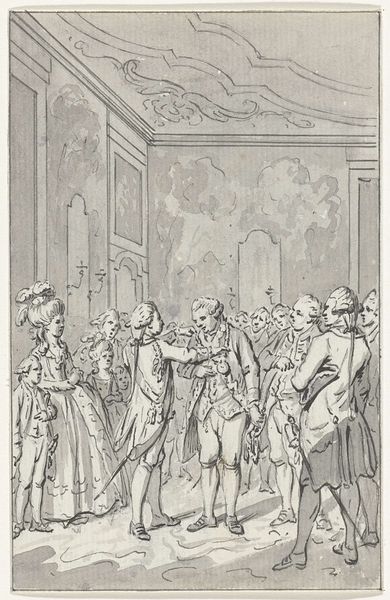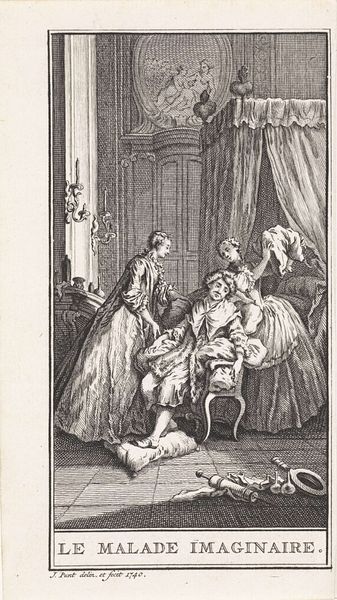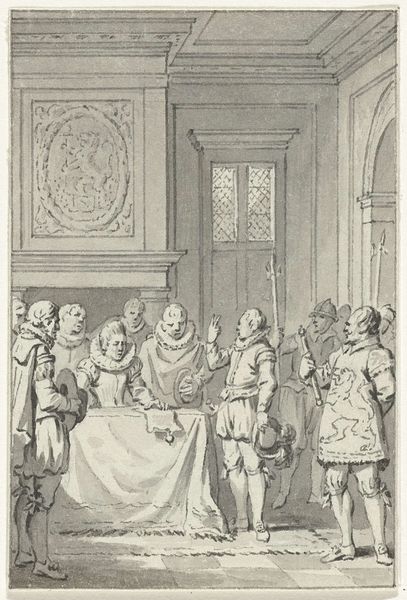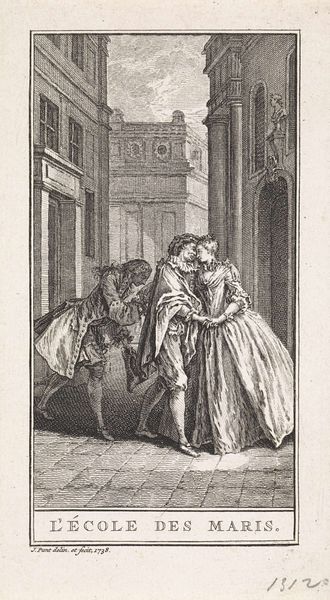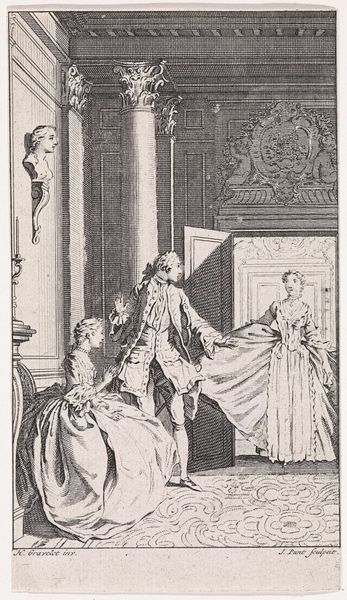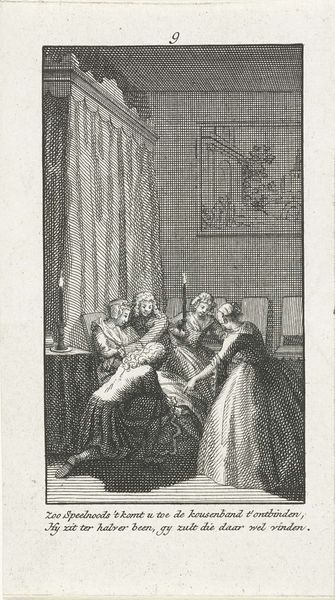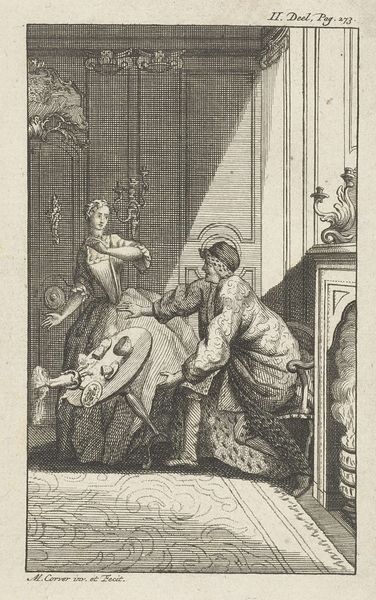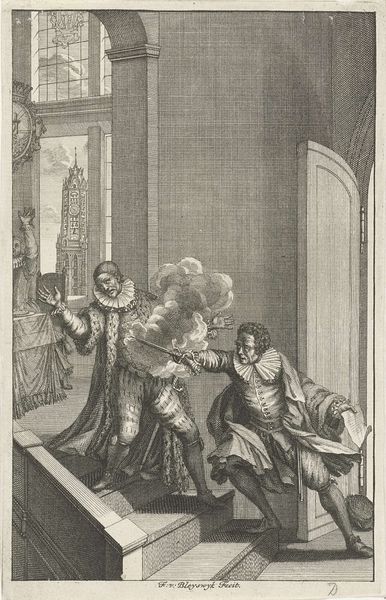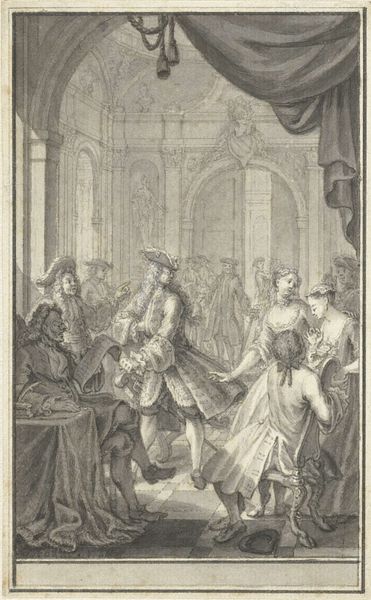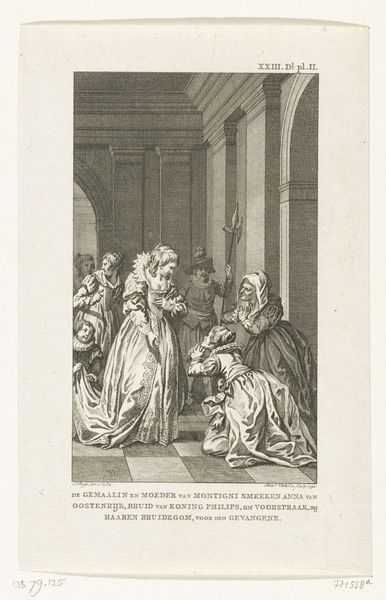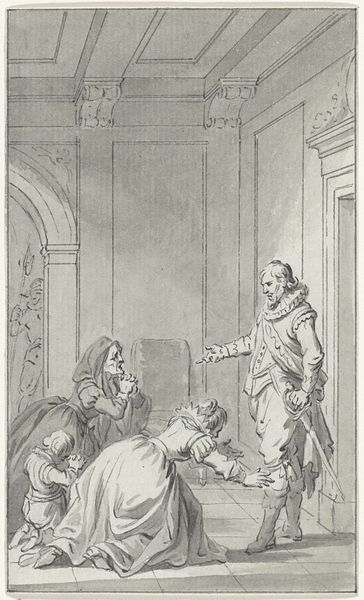
De vrouw en de moeder van Floris de Montmorency, baron de Montigny, smeken Anna van Oostenrijk om voorspraak voor Montigny, die in Spanje gevangen gehouden wordt. 1788 - 1790
0:00
0:00
Dimensions: height 150 mm, width 90 mm
Copyright: Rijks Museum: Open Domain
Editor: This drawing, created between 1788 and 1790 by Jacobus Buys, captures a really poignant moment. It's called "The wife and mother of Floris de Montmorency, Baron de Montigny, plead with Anna of Austria for intercession for Montigny, who is held captive in Spain." The somber tone and dramatic body language really strike me. What do you see in this piece, particularly when thinking about the symbols it might employ? Curator: It's true; the body language speaks volumes. Buys uses figuration, both literally and figuratively, to convey the emotional weight of this historical appeal. Notice how the architectural elements – the arches, the columns – reinforce a sense of hierarchy and the almost insurmountable power Anna of Austria embodies. It echoes the long tradition of representing power, a cultural memory of sorts, reaching back to classical imagery. The supplication of the figures becomes all the more impactful against this backdrop, doesn't it? Do you see any recurring visual motifs? Editor: Definitely, the motif of hands praying is powerful, showing submission and desperation. It also looks like Buys has made the figures look more distressed with each step away from the viewer: the closest one weeping in submission, the next, withered, on her knees, and lastly, the distant group with visible sorrow. But is this image relying on pre-established visual symbols? It feels more staged somehow. Curator: That's a perceptive point. While not reliant on established religious iconography, Buys certainly draws upon established visual rhetoric – conventions used to signal specific emotional states and social relationships. The placement of figures, the emphasis on gesture, even the controlled use of line and shadow—all of these elements contribute to a carefully constructed narrative. The halberdier standing behind Anna, the light and shadow he casts, reinforces this theme and Anna’s position. How does it sit with you now? Editor: It makes more sense, knowing the weight each figure carries in this drawing. It's no longer just a historical snapshot, but a calculated representation of power, despair, and the universal language of supplication. Curator: Precisely. And through these symbols, this piece speaks not only of a specific historical event, but also of enduring human struggles – the plea for justice, the pain of loss.
Comments
No comments
Be the first to comment and join the conversation on the ultimate creative platform.

